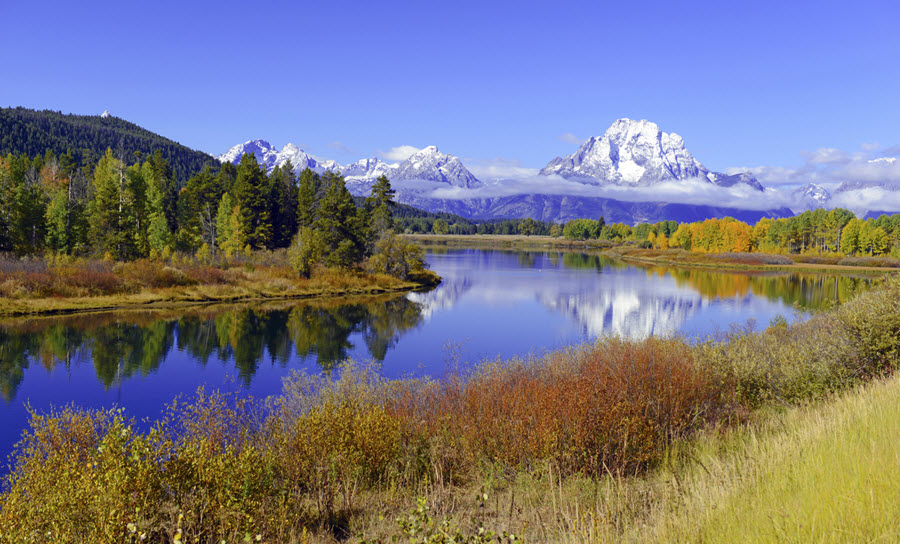How Beauty Just Could Save the World

Despite COVID restrictions, Lander City Park is full of cars, campers, RVs, vans and tents. This morning I noticed license plates from Colorado, Texas, Pennsylvania, Utah and Vermont. Why did they come? In part to bask in the incredible beauty that surrounds our little Wyoming town.
Chasing Beauty
My brother-in-law and his wife will be here in August. I can’t wait to wow them with the beauty of Sinks Canyon, Red Canyon, the Popo Agie Falls, Worthen Meadow, the Wind River Mountains.
Dottie and I chased beauty on our own vacation in June: The Whitney Western Art Museum in Cody, Yellowstone National Park, Glacier National Park, Whitefish and Flathead Lakes in Montana. At Glacier, despite the threat of rain, hundreds of us hiked the 4.5 mile round trip to be awed by Avalanche Lake in its glacial cirque. The official count is seven waterfalls; I counted at least 10. We stood on the crowded shore snapping one inadequate photo after another in an effort to take the landscape home. It was beautiful, sublime.
Reflecting on all the summer visitors looking at (perhaps looking for?) the beautiful reminded me of C. S. Lewis’ book The Abolition of Man. (Okay, so I’m a nerd). Lewis quoted a high school level textbook regarding the beauty of waterfalls. “When the man said This is sublime, he appeared to be making a remark about the waterfall,” he wrote. But actually
he was not making a remark about the waterfall, but a remark about his own feelings. What he was saying was really I have feelings associated in my mind with the word ‘Sublime,’ or shortly, I have sublime feelings … This confusion is continually present in language as we use it. We appear to be saying something very important about something: and actually we are only saying something about our own feelings.
Beauty Doesn’t Exist?
According to the authors of the textbook, beauty — that is objective beauty, beauty “out there” — doesn’t exist. The Wind River Mountains, Avalanche Lake, the Grand Canyon of Yellowstone are not beautiful, awe-inspiring, sublime or anything else. All they are is geography: rocks, water and dirt. We observers invest them with meaning and thus with adjectives based on our feelings. Thus calling the Grand Canyon of Yellowstone “pathetic” or “boring” is just as legitimate as calling it “grand.”
Is that, I wonder, what the crowds of summer visitors to Lander, Yellowstone, Glacier and hundreds of other beautiful spots mean when they call the scene “beautiful?”
I don’t think so. They may tell you “my truth is my truth and your truth is your truth”— that is, that they don’t believe in objective truth. They may tell you that “the good changes from age to age, culture to culture, person to person” — that is, they don’t believe in universal morality. But if, as we stood on the shore of Avalanche Lake, we heard someone proclaim in a loud voice, “What an ugly place,” that comment and the person who made it would become an object of scorn and ridicule.
… we still believe in beauty
That is to say that we still believe in beauty. Waterfalls are beautiful even if there are naysayers. And, as a result, it just may be that beauty can save the world.
Beauty Makes Us Happy
“Charm is deceitful, and beauty is vain,” warns Proverbs 31:30. Physical beauty, beautiful objects, even beautiful sights are temporary. We grow older, silver tarnishes and mountains are ground into dust.
At the same time, the psalmist wants more than anything else “to behold the beauty of the Lord” (Psalm 27:4). That’s a beauty that never fades, a beauty we see more clearly the more we look and, if we are His, it will be the beauty we gaze upon in joyful awe forever.
The Catechism of the Catholic Church notes: “Even before revealing himself to man in words of truth, God reveals himself to him through the universal language of creation, the work of his Word, of his wisdom: the order and harmony of the cosmos — which both the child and the scientist discover.”
“It is Jesus in fact that you seek when you dream of happiness,” Pope St. John Paul II told the crowds at World Youth Day 2000. “He is waiting for you when nothing else you find satisfies you; he is the beauty to which you are so attracted.”
They Still Believe in Beauty
Our neighbors still believe in beauty. They come to places like Lander, Yellowstone and Glacier to stare in wonder. Beauty makes them happy. And Jesus is the one for whom they long as we stand beside them gazing at our beautiful world.
Can you and I, standing alongside them this summer, help them connect the dots?
Dr. James Tonkowich, a senior contributor to The Stream, is a freelance writer, speaker and commentator on spirituality, religion and public life. He is the author of The Liberty Threat: The Attack on Religious Freedom in America Today and Pears, Grapes, and Dates: A Good Life After Mid-Life. Jim serves as Director of Distance Learning at Wyoming Catholic College and is host of the college’s weekly podcast, “The After Dinner Scholar.”







